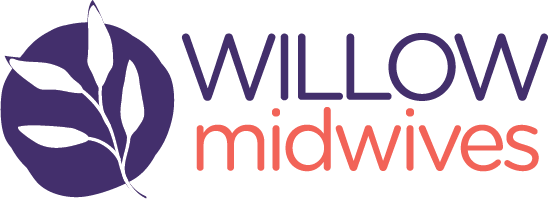Willow has held such a special place in my heart over my 10-year career. Willow and I actually came up together (they are ALSO celebrating their 10 year anniversary) and much of what I've learned about freestanding birth centers (and good birth) I've learned from Willow.
Here are the top three moment I've had at Willow that make me excited as a birth professional to refer to them (and freestanding birth centers in general) over and again
1- They can handle a transfer. I know it’s bold to start here - and it’s also the least-likely outcome of your birth at a freestanding birth center. But as someone who has witnessed a handful of transfers at Willow (it’s to be expected over a 500-birth career) I can say that what makes their care so specifically relevant is that they are READY for a transfer, but never center “worst case scenario” thinking when treating patients. This creates a best-of-both-worlds scenario, because they are both prepared to let things unfold physiologically, AND have air-tight protocols, skills and responsiveness when needed. One of my favorite examples of this was during a Willow birth when a surprise-breech baby was discovered before pushing began. The midwife responded professionally and promptly. Holding as much space for the family’s grief and surprise, as she did for the urgency of the moment. She was responsive - both medically and emotionally and brought the family ALONG for the change, instead of making them feel as though they had no more choice. Ultimately, the family did need to have a surgical birth that night - but they got to choose a hospital that matched their values and were not scared or rushed into making this decision.
2 - They mend the hearts and bodies of second, third and beyond birthers. Some of my very favorite births at Birth Centers (including Willow) are redemption births. A birth where we are seeking something different than what happened the first time. My favorite of these was for a nurse anesthetist (yes, an actual epidural nurse) whose first and second babies were born in the hospital she worked at. First with an OB (which was highly interventive) and second with midwives (which was less-so, but still very medically driven). For her third, she chose to leave behind the values of her education and professional hospital setting and give birth in the water at Willow. The way she was cared for, the way she was able to access spiritual expression and transcendence all while being held in a medically sound space - transformed her trauma story around birth and fundamentally informed the way she cares for patients now, still as a nurse anesthetist. Hear me when I say this - the NUMBER ONE thing I hear from people who give birth at a birth center is this, “I wish I had done this with my first.”
3 - Relational-based care is centered. Each individual who is giving birth, comes to their birthing time, pregnancy and postpartum with a unique set of life experiences and bodily expressions that influence how the birth goes. Trauma informed care (as a universal practice) equitable race and gender based care (as a universal practice) and evidence-based care (as a universal practice) mean that you will be cared for and assessed based on your unique bodily blueprint WHILE ALSO being extended the generosity of the belief that all bodies can birth. You will not be given routine care. You will not be given routine interventions (you will be given customized care and customized interventions, only if needed.) You can have a fat body, a body of Color, a queer body, a femme or masc body, a body with trauma or some medical variation, and still expect to be treated as any low-risk pregnant person would. A very simple example of this was when a client who suffered from white-coat syndrome (elevated blood pressure only when being assessed in-clinic) was in labor and her body was throwing out some high BP numbers. Knowing this about her, after building an intimate relationship with the client, the midwife let the client settle into the space. Took care to carefully monitor all other vitals of the birther and baby and after she was assimilated to the environment - to her BP the old fashioned way (with a watch and a stethoscope) while she was sitting calmly in the cool dark bathroom. With this minor adjustment, accurate vitals were measured and any false need for intervention was avoided. The little things ARE the big things, guys.
Written by Sarah Auna. Sarah is a birth and decision making coach. She has virtual and office hours in the Twin Cities at Sunu Minnetonka and after 10 years of in-birth and on-call care, she has moved to a consultation service helping families find the best care for them by assessing their individual values and needs and then helping them get that care in the Twin Cities, nationally and internationally. You can work with her by booking a session here.
Photo is compliments of Sierra Madre photography.

